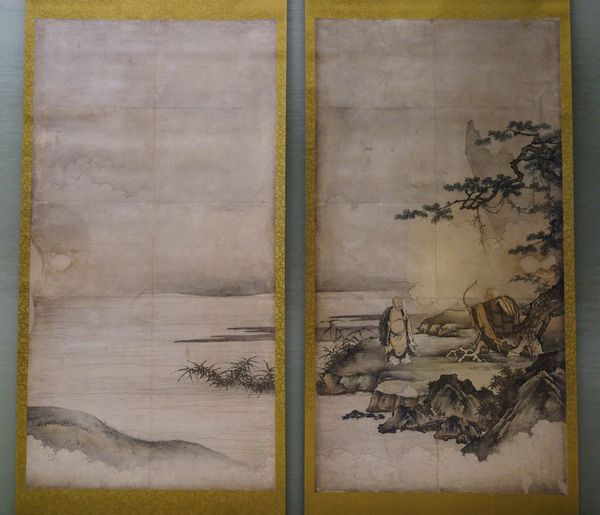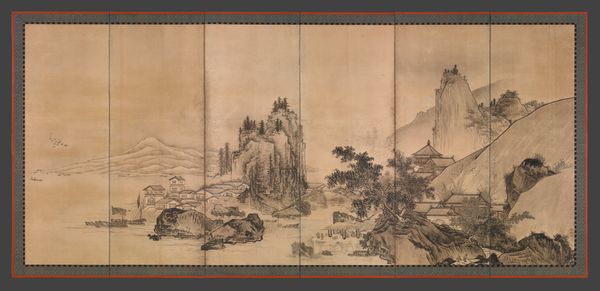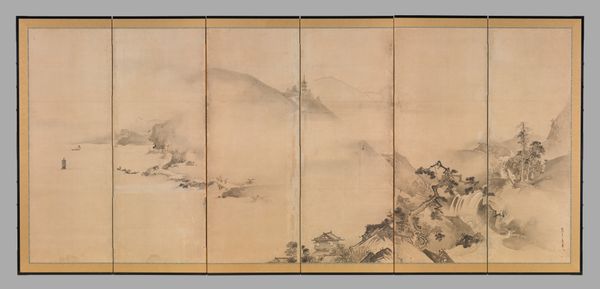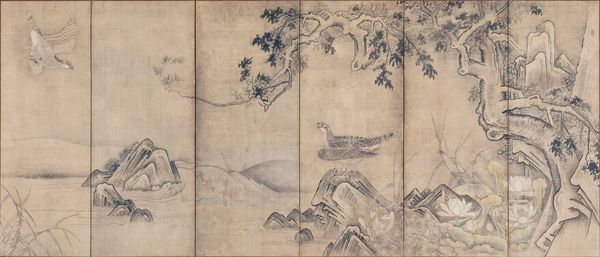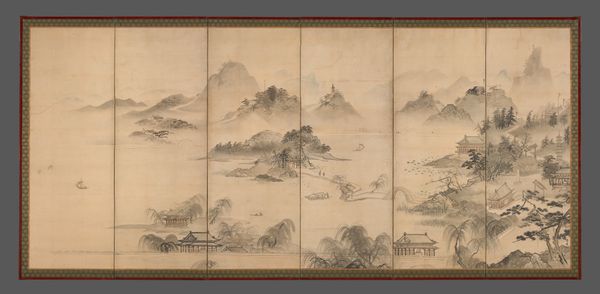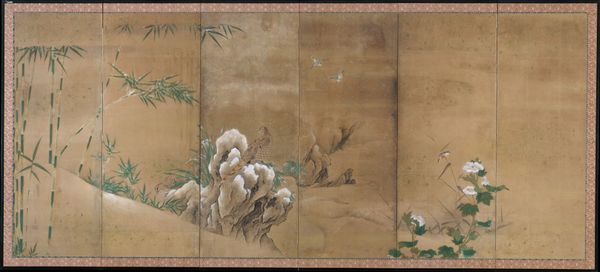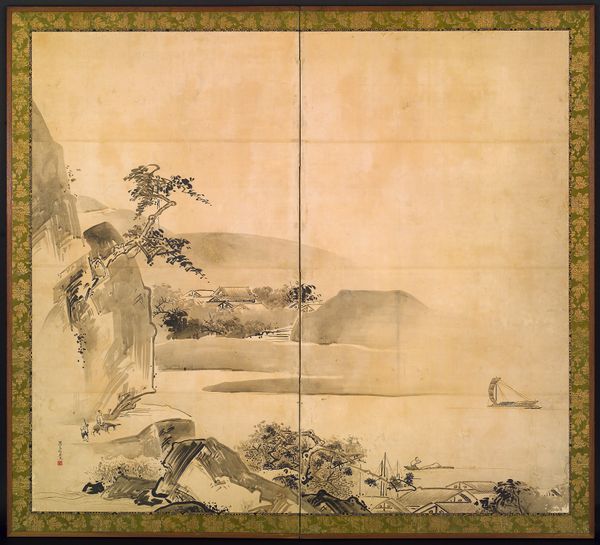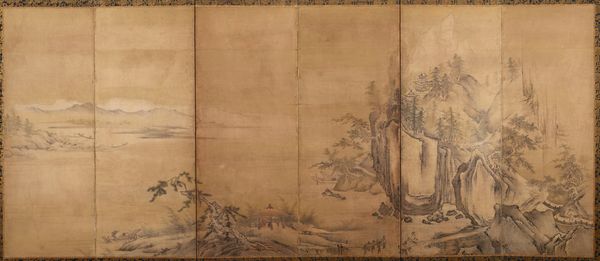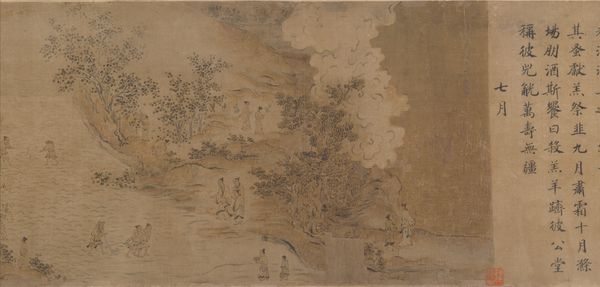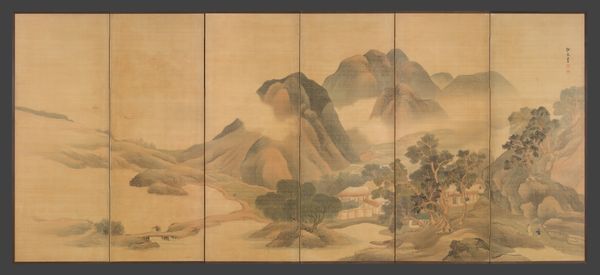
Eight Views of the Xiao and Xiang Rivers Late 17th/early 18th century
0:00
0:00
paper, ink
#
asian-art
#
landscape
#
ukiyo-e
#
paper
#
ink
Dimensions: Each: 170.2 × 381 cm
Copyright: Public Domain
Editor: Here we have Sekkei's "Eight Views of the Xiao and Xiang Rivers," a landscape piece done in ink on paper around the late 17th or early 18th century. It's really expansive. The muted tones give it a wistful, almost nostalgic feeling. I'm curious, what sort of narratives or social contexts come to mind when you look at it? Curator: Well, the "Eight Views" theme is itself a key cultural marker. It's rooted in the literati tradition of celebrating specific, idealized landscapes. The Xiao and Xiang rivers in China were often depicted as a symbol of retreat for scholars and officials who felt alienated from political life. Editor: So, it's not just about the pretty scenery? Curator: Exactly! Consider who was consuming art in Japan at that time. Ukiyo-e like this became popular among the merchant class. It allowed them to engage with the sophisticated culture of the elite while still expressing their own values. The landscape becomes a stage for social aspirations. Are we simply admiring mountains or, instead, consuming access to social refinement through its imagery? Editor: That’s a great point! It reframes the landscape not as a purely aesthetic experience, but also a cultural statement. Curator: Precisely. Think about how this image might have functioned in a domestic space. A folding screen like this wasn’t just decoration; it shaped the environment and reinforced social meanings. Editor: It’s fascinating to consider how a landscape can carry so much cultural weight. I'll definitely think more about the social role of these landscape paintings in the future. Thanks for this deep dive! Curator: My pleasure! Understanding the public role of art enriches our view of visual art.
Comments
No comments
Be the first to comment and join the conversation on the ultimate creative platform.

